By Rick VanSickle
On a warm, late-summer’s day in 2011, I sat outside Ilya and Nadia Senchuk’s recently purchased home in Winona sipping the very first vintage of Leaning Post Wines.
Also in this Niagara Wine Report: A bumper crop of great Niagara wines is coming to Vintages stores on Saturday, including wines from Westcott, Stratus, 13th Street, Tragically Hip, Featherstone, and On Seven.
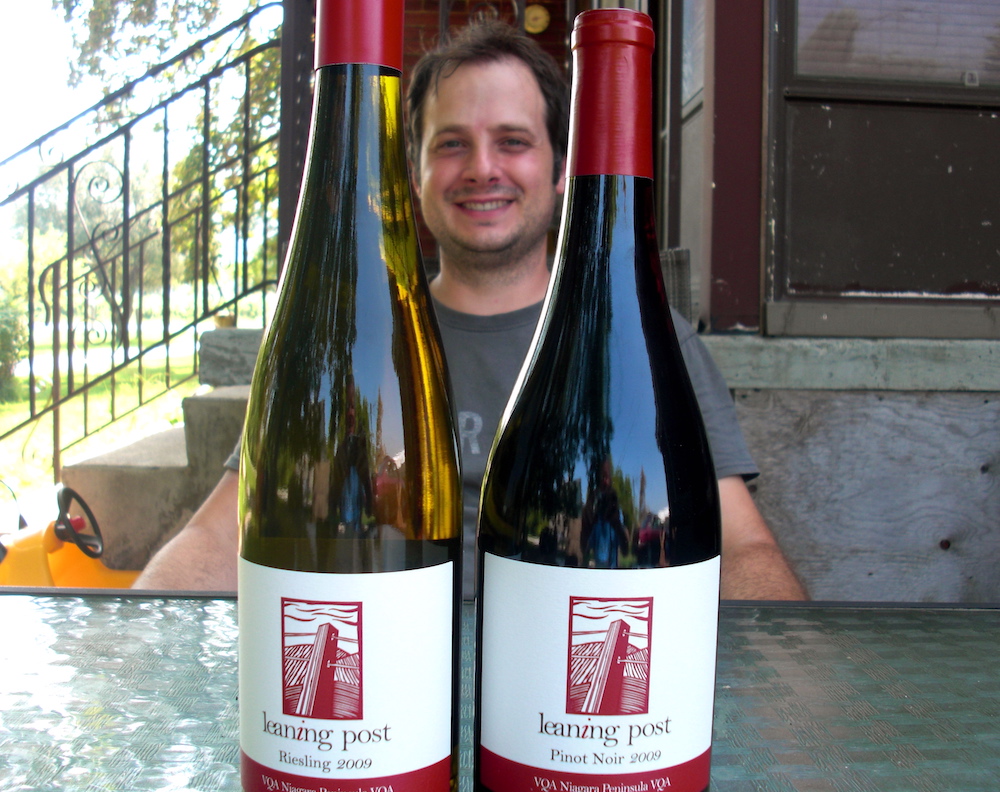
Work on the vineyard in an unproven terroir in the far west frontier of Niagara had barely begun. The 11-acre property was originally planted to Niagara, Concorde, and Maréchal Foch grape vines, but it would be Pinot Noir and Chardonnay that would form the backbone of Leaning Post’s portfolio, and the replanting had only just begun.
On that September 5 day, I tasted the first two wines from the then virtual project from Leaning Post — a single vineyard Riesling from the Wismer Foxcroft Vineyard on the Twenty Mile Bench and a Lowrey Vineyard Pinot Noir from the St. David’s Bench. They were absolutely spot on from the beginning; beautiful examples of vineyard-specific wines made by a winemaker who was becoming a big part of a vanguard of winemakers looking to craft terroir specific wines in Niagara.
Ilya Senchuk was not a stranger to crafting wine in Niagara. He was the winemaker at Foreign Affair when the virtual brand began and prior to that, made the wine at Lenko, where I first met him, on the Beamsville Bench. He also did and still does make the wine at Good Earth Food and Wine Company. The Senchuks’ path to full-blown estate winery was slow, methodical, and proudly built without any financial help from outside investors.
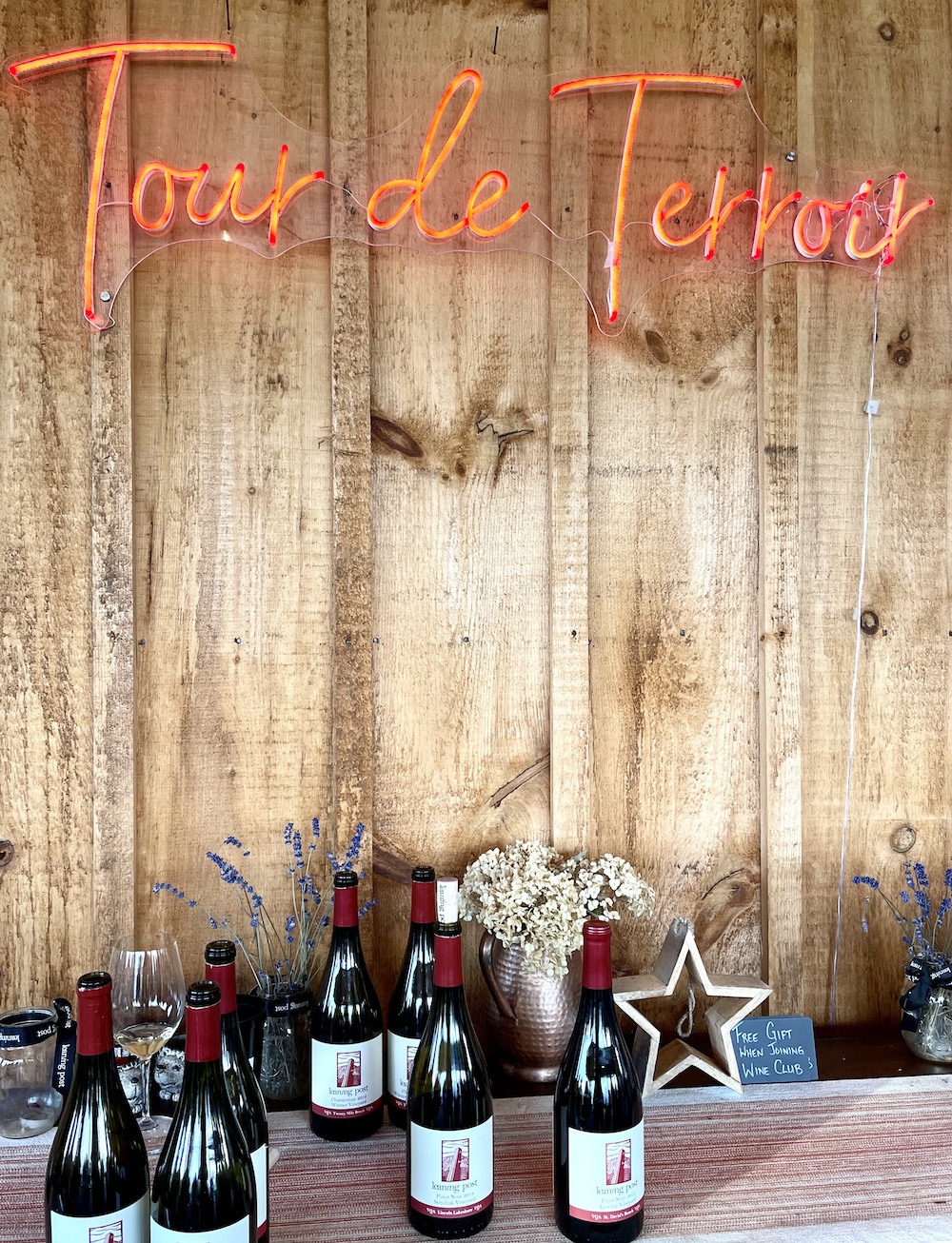
“Our only backing was from friends, family and financial institutions,” Ilya said with a wry smile at a 10-year anniversary bash held at the winery this past weekend. He retold a story to me of a relative helping pay for a lease on a tractor that had been shipped to Niagara from the Prairies so he could work on the new vineyard. The Senchuks paid in kind with wine and took over the lease after two years.
In 2011, there was no winery, no tasting room, no vineyards, no website, and no way for consumers to even get the debut wines other than calling Ilya or Nadia on the phone or ordering it with your meal at a small network of restaurants in Niagara and Toronto. The first production of the Pinot and Riesling was under 200 cases combined and the first sale was from a guy who misread a Tweet and showed up one day at the farm to buy some wines a week before the official release. Those very first bottles were sold from the top of a table saw in the future tasting room and winery.
With money tight, a new farm and home recently purchased, both Ilya and Nadia working other jobs to keep up with all the bills coming in, and raising a young family they had to economize in those early days.
The first wines under the Leaning Post label listed the omnibus Niagara Peninsula as the appellation on the label. Senchuk would have preferred to showcase the sub-appellation and vineyard on the label, but because it meant a lot more money to print different labels, he decided against it for that vintage. With the Pinot and Riesling, it required a change of the black plate on the printing press for the two wines, while an appellation change would have meant a colour plate change was needed at a far greater cost. “It was kind of silly to pay extra for the sub-appellation,” Senchuk said at the time. “Besides, we meet everyone we sell the wine to and can explain in person where the grapes are from. It’s pretty geeky.”
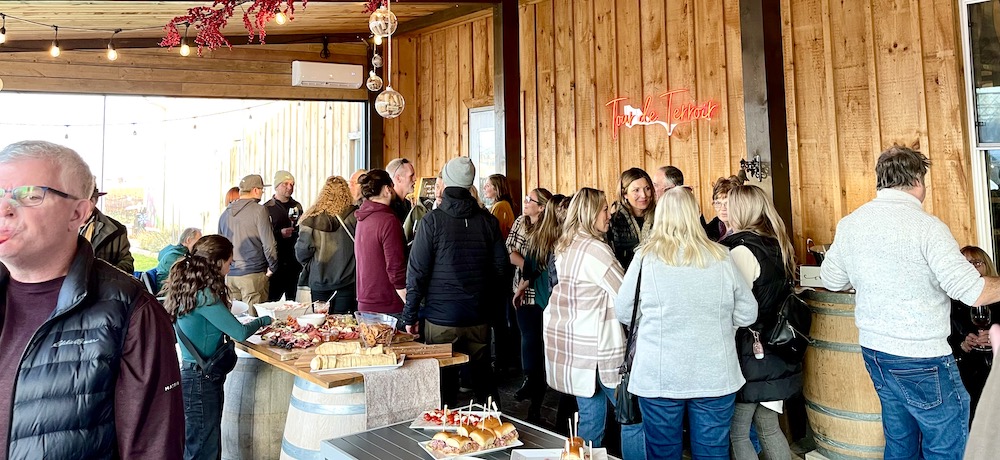
Zoom ahead to 2023 and a packed house of wine club members, friends and engaged consumers helping the Senchuks celebrate their 10-year anniversary of opening the winery in 2013. They have come a long way from those early days with a beautiful tasting room, winery, open-space events pavilion, and a full, robust portfolio of wines anchored by various expressions of single-vineyard Pinot Noirs and Chardonnays, made from their own Senchuk Vineyard and key vineyards they source, plus a full-range of other wines that have become favourites for the many fans of this hard-working couple’s wines.
A visibly emotional Nadia Senchuk told the crowd gathered on Saturday that “the fact that it’s 10 years, oh my god, is it really years ago that we started?! You guys know we make some of the (expletive deleted) best wine in Ontario. Cheers to the next 10, no 20, years!” Tears flowed down Nadia’s face, a release from all the hard work getting to this point for the proud couple through hard work and a careful approach transitioning from a virtual brand and now a respected estate winery making some of Niagara’s most personable wines. Ilya and Nadia Senchuk can take a bow, but you know they are just getting started.
As part of the 10th anniversary celebration, the Senchuks offered guests a fun tasting comparing older vintage wines to newer ones. Here are my impressions.
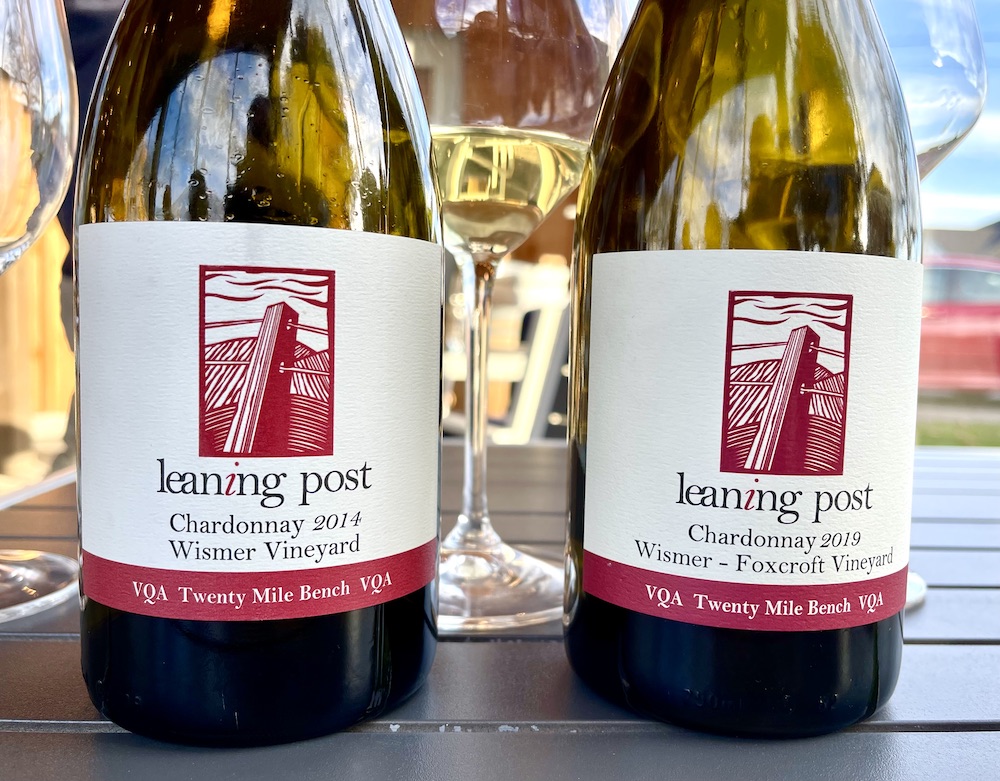
Leaning Post Wismer Foxcroft Chardonnay 2014 and 2019 — I was a bit surprised by how well the 2014 showed. It wasn’t the best vintage in Niagara, but the Chards from top Niagara vineyards and winemakers have held up quite nicely. This was rich and savoury with flinty/stony minerality, integrated fruit and plenty of zip on the finish. The 2019, a similarly difficult,late-ripening vintage had lifted floral notes, bright fruits, and an elegant and finessed finish. Still plenty of life left.
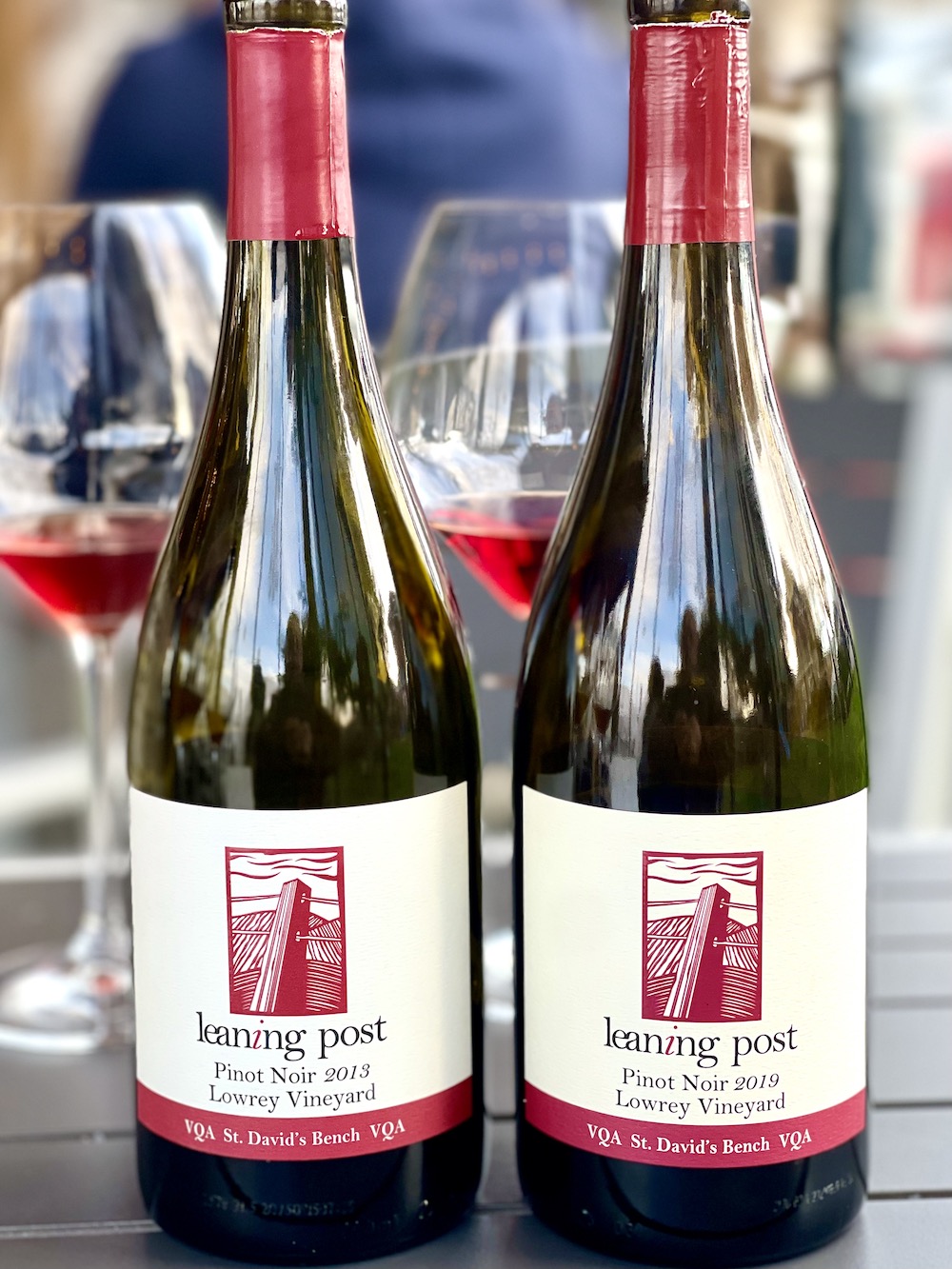
Leaning Post Lowrey Vineyard Pinot Noir 2013 and 2019 — Senchuk is one of the lucky five other winemakers who source fruit from the iconic Lowrey Vineyard and has done so from the first vintage in 2009. The 2013 was showing a bit of age, but still holds interest with lifted floral notes, dried red fruits, resolved tannins and plenty of lift on the finish. The 2019 is lovely at this stage with rich and savoury red berries, violets, and freshness through a long, lifted finish.
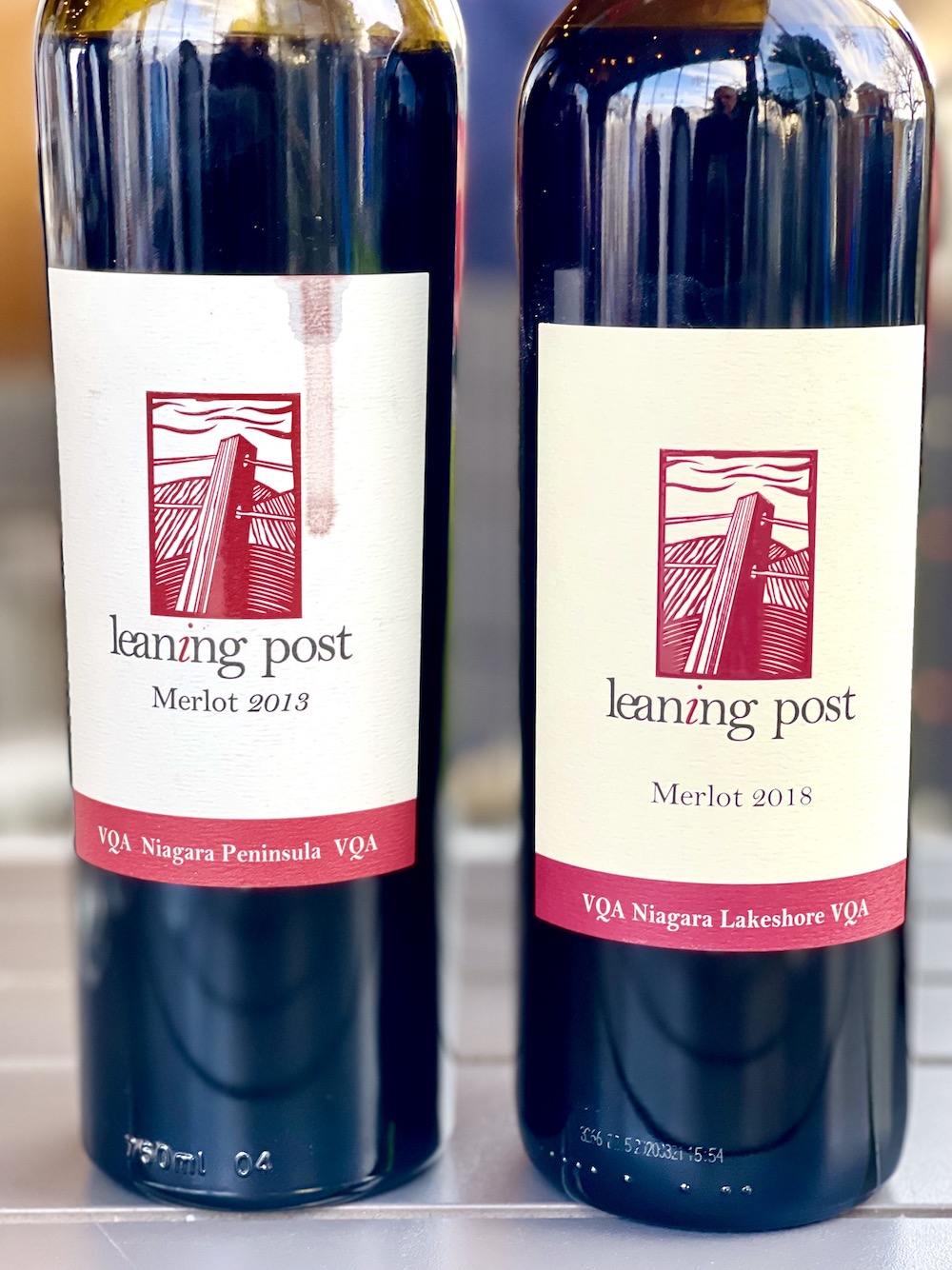
Leaning Post Merlot 2013 and 2018 — I was quite impressed with this Twenty Mile Bench sourced 2013 Merlot, a cooler vintage in Niagara. Such concentration and abundance of red fruits, anise, lovely eucalypt/minty herb notes and finesse through a long finish. The 2018, sourced from Niagara Lakeshore, was more delicate with pretty red berries on the nose and more structure and evident tannins on the palate all leading to a long, vibrant finish. The 2019 (and 2013 to some extent) are still comfortable in your cellar, if you have any.
Our picks of the Niagara wines
coming to Vintages Saturday
Some heavy hitters from Niagara are being released at Vintages stores Saturday. Here are our picks.
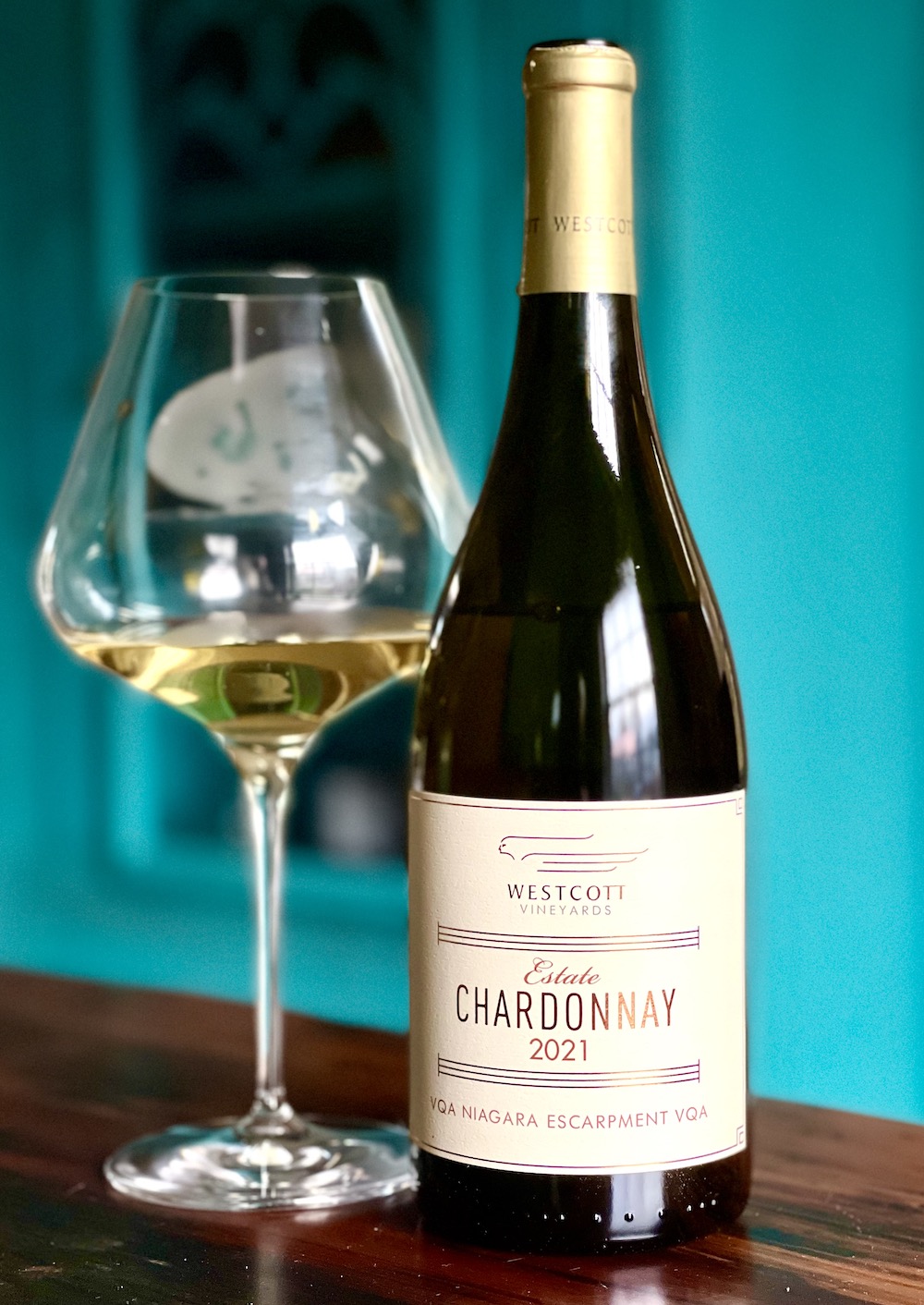
Westcott Estate Chardonnay 2021 ($30, new review, 92 points) — The fruit for the Estate Chard comes from two Westcott vineyards — the home vineyard on Vinemount Ridge and Butlers’ Grant on the Twenty Mile Bench. The fruit was hand-picked, whole bunch pressed with no sulphur added at the time of crushing. It was wild fermented in oak and aged for 10 months. Quite an impressive nose of yellow apple, fresh pear, lemon zest and stony/saline notes with toasty vanilla and spice. It’s rich and creamy on the palate with pear/quince fruit, a touch of savouriness, lemon tart, flinty/stony notes, subtle butterscotch, spice and a zesty, lifted finish.
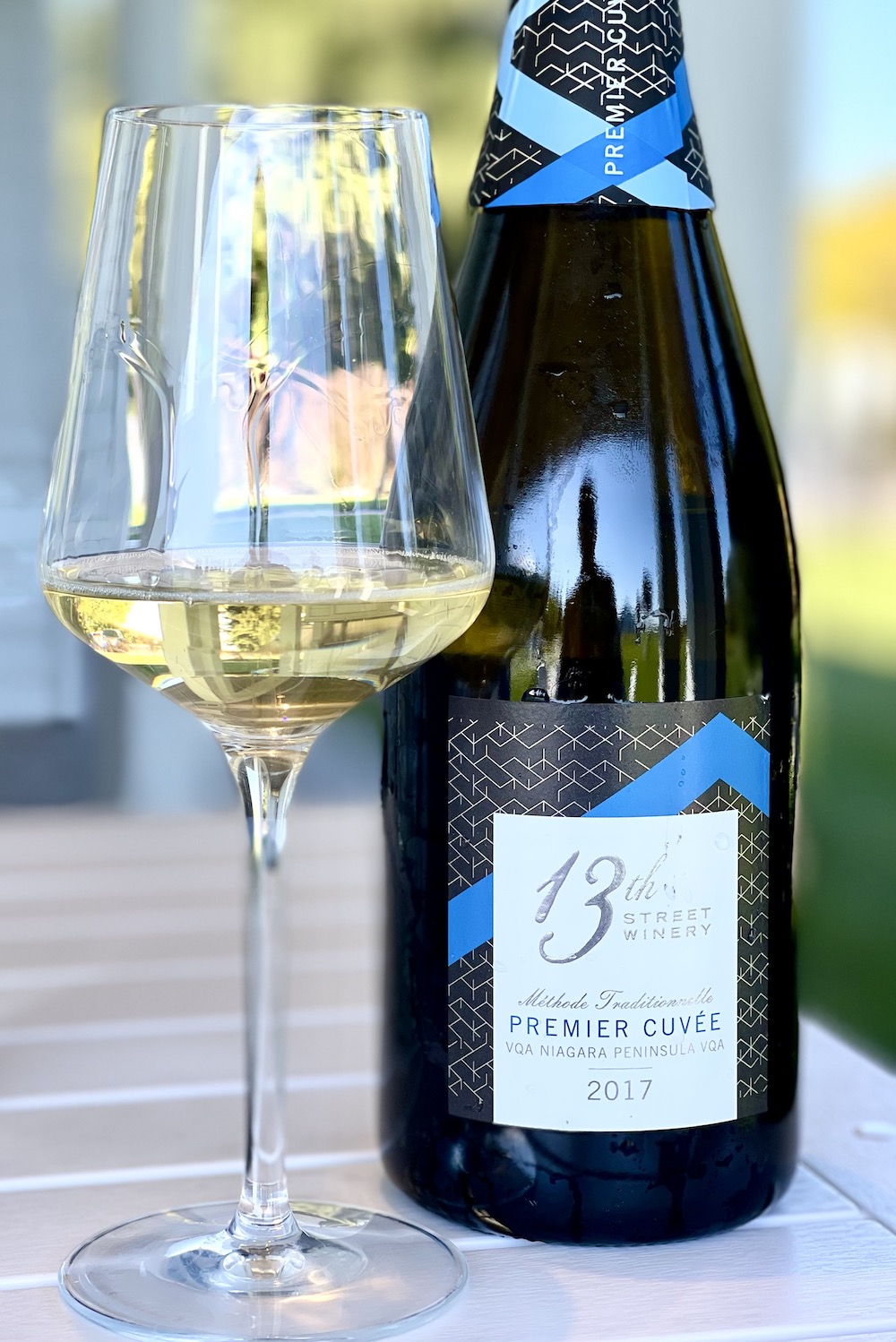
13th Street Premium Cuvée Sparkling 2017 ($40, 93 points) — This blend of mostly estate Chardonnay (55%) and Pinot Noir (45%) was aged on its lees for a minimum of 48 months. After disgorging, winemaker JP Colas felt the wine was in perfect balance so decided to not add any sugar to the dosage resulting in a classically dry sparkling wine in the zero-dosage style. This wine was not exposed to oak and did not undergo malolactic fermentation. It is gorgeous on the nose with bright, fresh saline minerality, lifted lemon and ripe apple, with baked bread and toasty autolytic notes along with subtle berries. The bubble in the glass and on the palate is persistent and lively with stony/flinty minerality, apple and pear fruit, lemon-citrus accents, bready/brioche notes, and all together lifted and finessed through a brilliantly crisp finish. Can cellar to 2026.
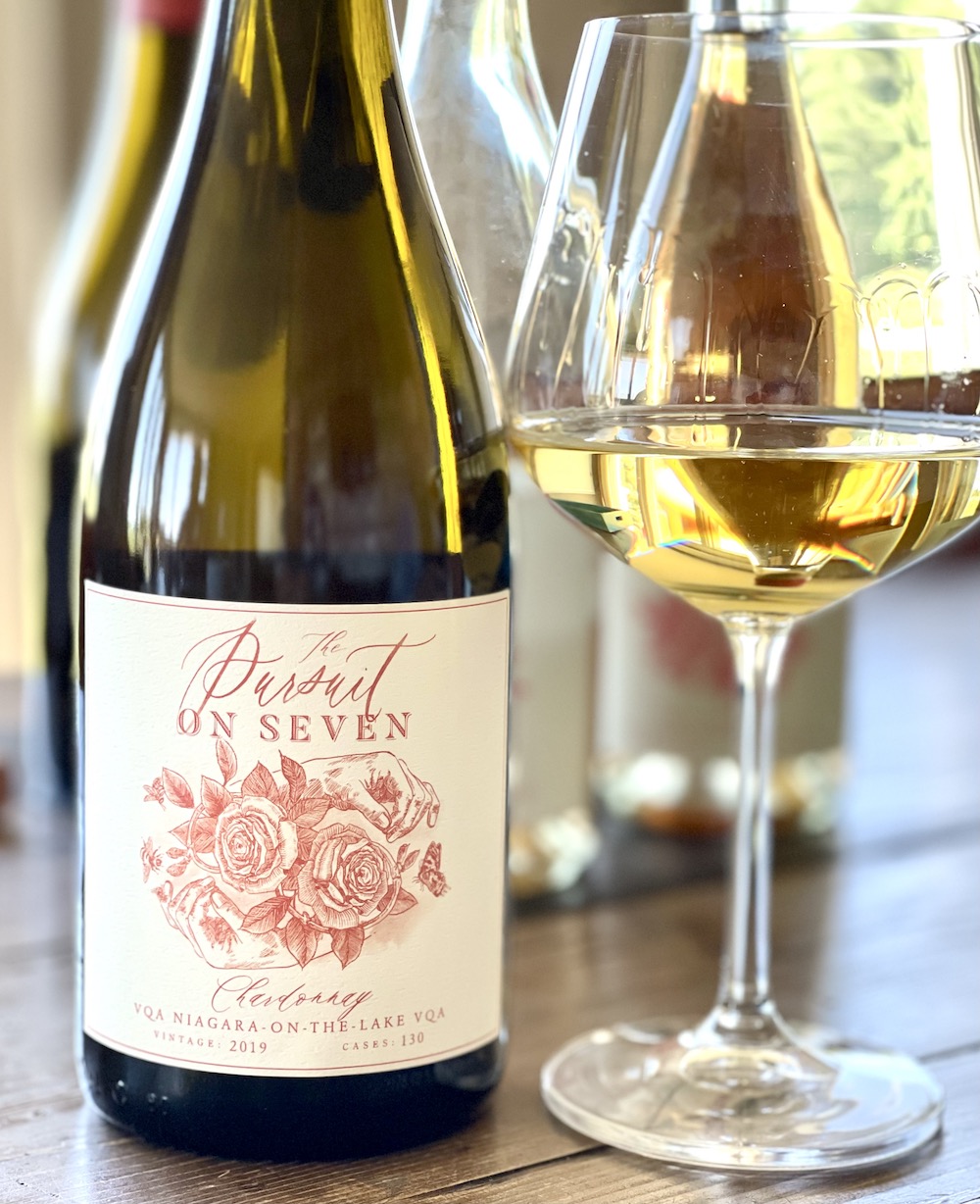
On Seven The Pursuit Chardonnay 2019 ($48, 94 points) — This Chardonnay was created predominately from a 2014 planting of Chardonnay Dijon clone 76. The fruit was hand-harvested and the whole clusters were then pressed to produce juice. After settling to remove gross lees, the juice was transferred to French oak barrels (25% new, 75% neutral) for wild yeast fermentation and aging. After 20 months in barrel, the wines were coarsely filtered and bottled. “I love 2019 for Chardonnay; if anyone wants to do classic (Burgundian) style, it was a year that had terroir and intensity right across it,” said winemaker/consultant Peter Gamble. The nose is intense with poached pear, golden apple, shades of citrus zest, a touch of flint and wet stones, beautiful perfume, and savoury notes with elegant spices. It has dense stone fruits on the palate with some weight and structure, flinty minerality, a savoury accent, lemon tart, cream, and length through a finessed finish. It just gets better with every sip, suggesting time (2026-2028) in the cellar for further development.
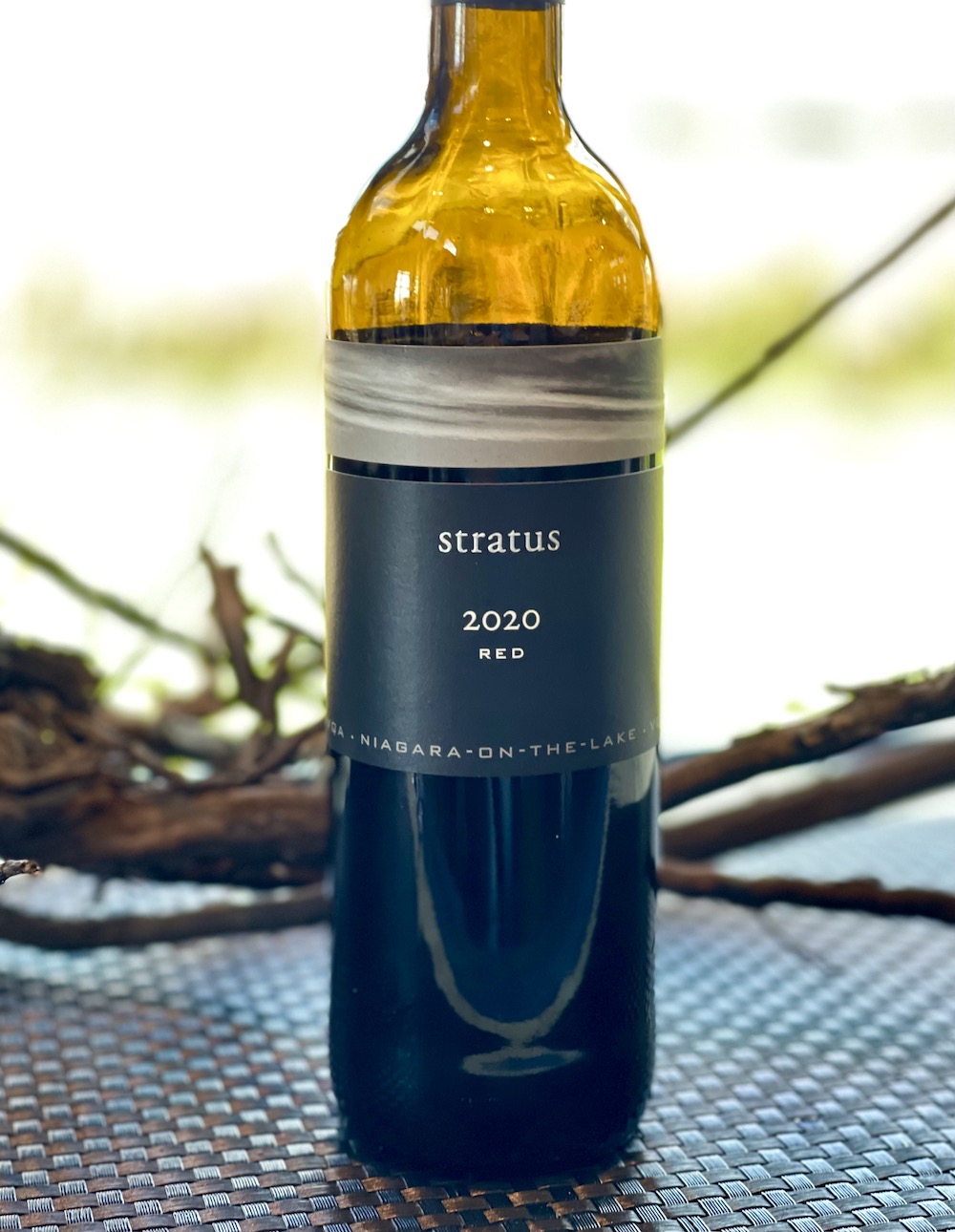
Stratus Red 2020 ($55, 94 points) — The iconic Stratus Red has been made in nearly every vintage since Stratus began, with the first vintage released in 2001 (2000 was declassified). The Stratus Red 2007 topped the very first Wines in Niagara’s most exciting wines of the year list in a post from December 2010 and has rarely strayed far from the Top 10 list since then. It has always been a radical departure from other red blends in Niagara, in that all red grapes grown at the farm can be considered for the assemblage, not just the Bordeaux varieties. It requires rigorous, time-consuming blending sessions to arrive at the final cuveé, with the top barrel samples going into this wine and what’s left trickling down to determine the rest of the red portfolio. The blend for this beautiful wine is 53% Cabernet Franc, 24% Merlot, 17% Petit Verdot, 3% Cabernet Sauvignon and 3% Malbec that spends 21 months in French oak (20% new). It’s gorgeously perfumed on the nose with a dense array of black cherries, wild raspberries, cassis/black currants, forest floor, savoury notes, and rich, elegant, and toasted spice notes. It caresses the palate with ripe, velvety tannins and reveals concentrated, ripe red berries, black currants, anise, subtle earthy/savoury notes, dried herbs, and rich spice notes that all echo on a long, vibrant finish. As it good as this is, it will get even better for the next 10 years. It you are not ready to go up to the next level with the new White Label Red at $145 a bottle, this will serve you well. Also note, this is the only opportunity to purchase this wine in the near future. Stratus isn’t doing a full release of the wine until next summer.
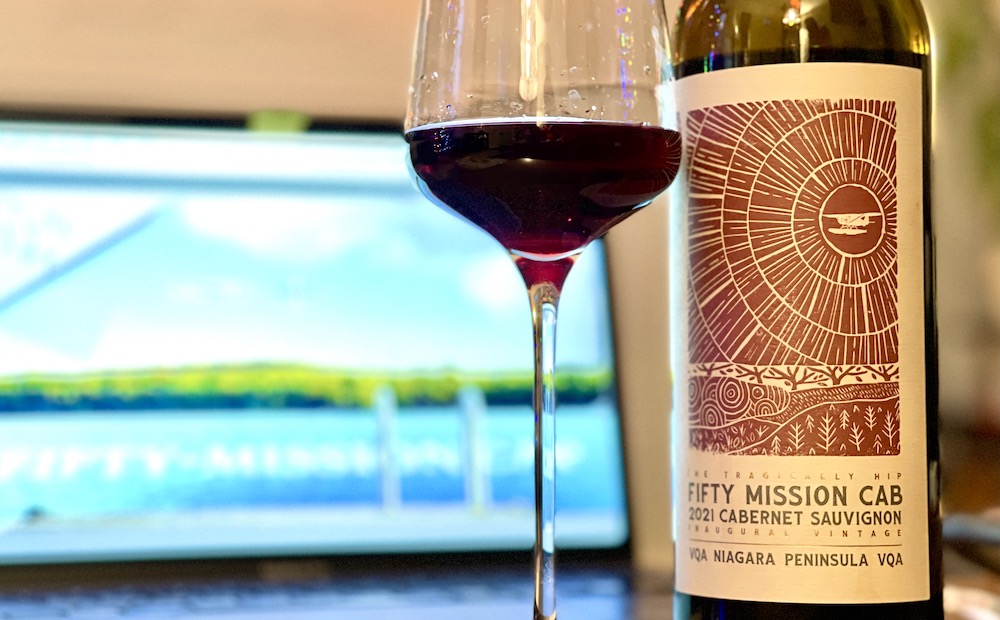
The Tragically Hip Fifty Mission Cab Cabernet Sauvignon 2021 ($40, 92 points) — This is a blend of Cabernet Sauvignon with a small amount of Merlot from two select vineyards in the Niagara Peninsula. Grapes were crushed and fermented in one tonne fermenter bins with daily manual punch-down of the caps. The wine was then racked into French oak barrels (30% new barrels, 40% 1 year old, 30 % seasoned) for 12 months prior to blending. Hip fans will be gobbling up these wines up quickly, but I hope they will take the time to enjoy the bottles rather than keep them as souvenirs. it really is a nice red wine to drink. It has a fairly robust nose of blackberries, dark cherries, dried tobacco, violets, plums and toasted oak spice notes. It’s rich and smooth on the palate with ripe dark berries, a touch of cherry compote, cassis, dried Cuban cigar leaf and earthy notes with lovely integrated spice notes and mouth-watering acidity driving the back end. A really fine Cabernet with classic Niagara elegance and enough stuffing to cellar until 2027, though attractive right now.
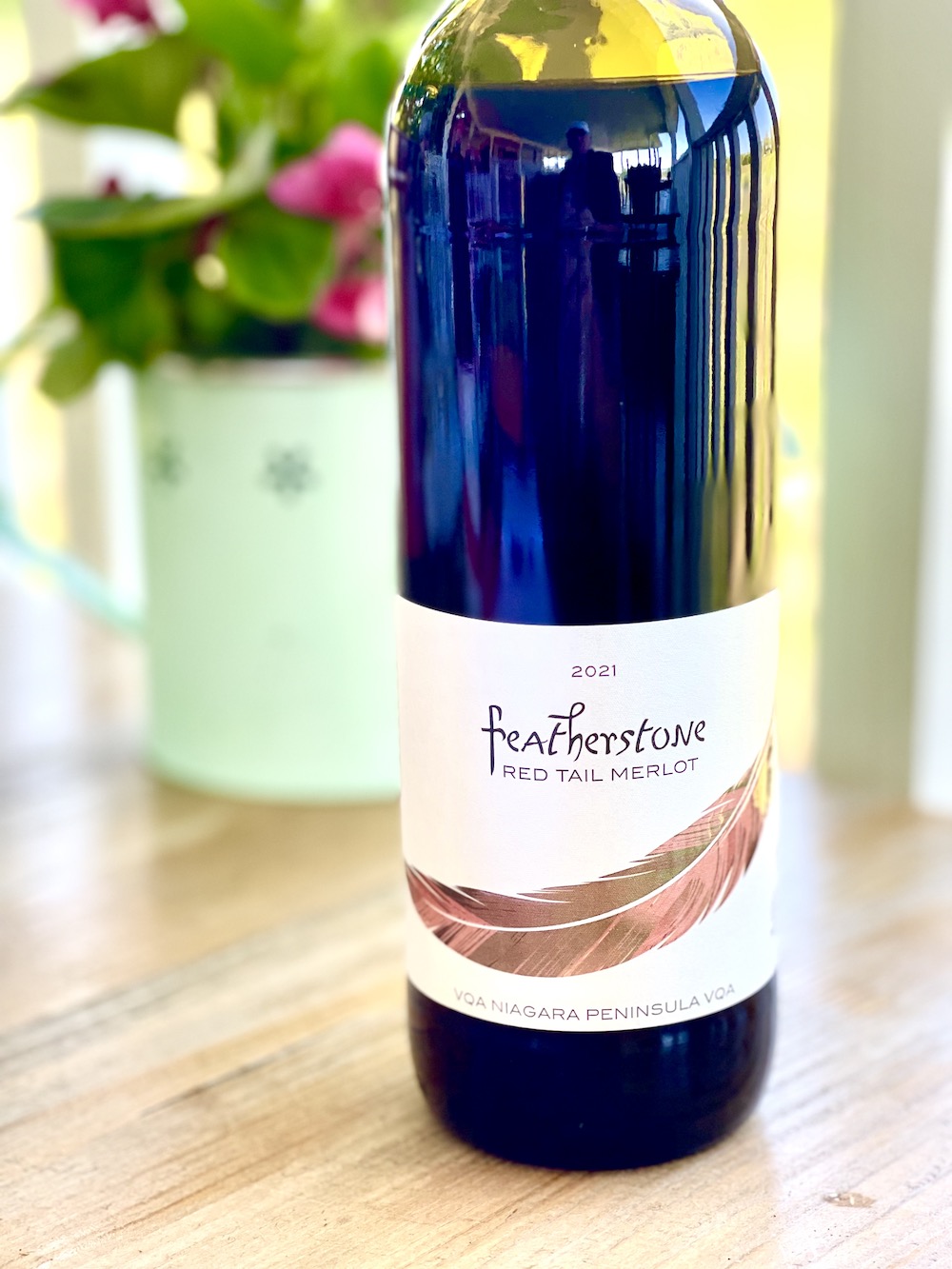
Featherstone Red Tail Merlot 2021 ($20, 92 points) — A ridiculously affordable price for a Merlot this good. The wine is aged in 100% fine French oak barrels (25% new) from Tonnellerie Sirgue Nuits Saint Georges for 10 months. There is an intriguing, perfumed note on the nose with dark cherries, black raspberries, cassis, integrated spices, and subtle earthy accents. It’s rich with some tannic structure and weight on the palate followed by juicy red berries, anise, cassis, and elegant spice notes through a long, lifted finish. [You] can age this for 5+ years and you can feel pretty damn happy you paid only $20 a bottle.
Other Niagara wines released, but not reviewed by Wines in Niagara:
• Jackson-Triggs Entourage Grand Reserve Brut Sparkling 2017 ($35)
• Rosewood Riesling AF 2020 ($20)
• The Tragically Hip Ahead by a Century Chardonnay 2021 ($22)
• Queenston Mile Pinot Noir 2017 ($40)






Comment here